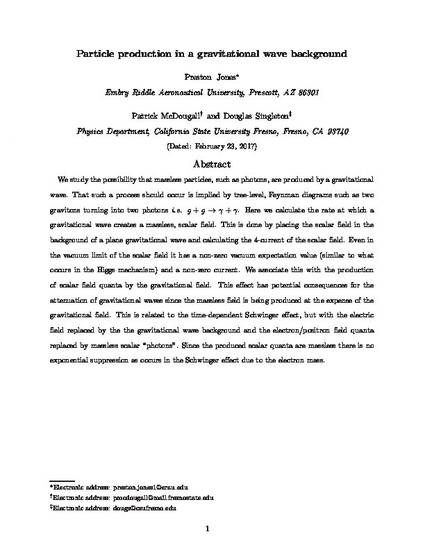
In this article, the authors study the possibility that massless particles, such as photons, are produced by a gravitational wave. That such a process should occur is implied by tree-level Feynman diagrams such as two gravitons turning into two photons, i.e., g + g → γ + γ. Here we calculate the rate at which a gravitational wave creates a massless scalar field. This is done by placing the scalar field in the background of a plane gravitational wave and calculating the 4-current of the scalar field. Even in the vacuum limit of the scalar field it has a nonzero vacuum expectation value (similar to what occurs in the Higgs mechanism) and a nonzero current. We associate this with the production of scalar field quanta by the gravitational field. This effect has potential consequences for the attenuation of gravitational waves since the massless field is being produced at the expense of the gravitational field. This is related to the time-dependent Schwinger effect, but with the electric field replaced by the gravitational wave background and the electron/positron field quanta replaced by massless scalar “photons.” Since the produced scalar quanta are massless there is no exponential suppression, as occurs in the Schwinger effect due to the electron mass.